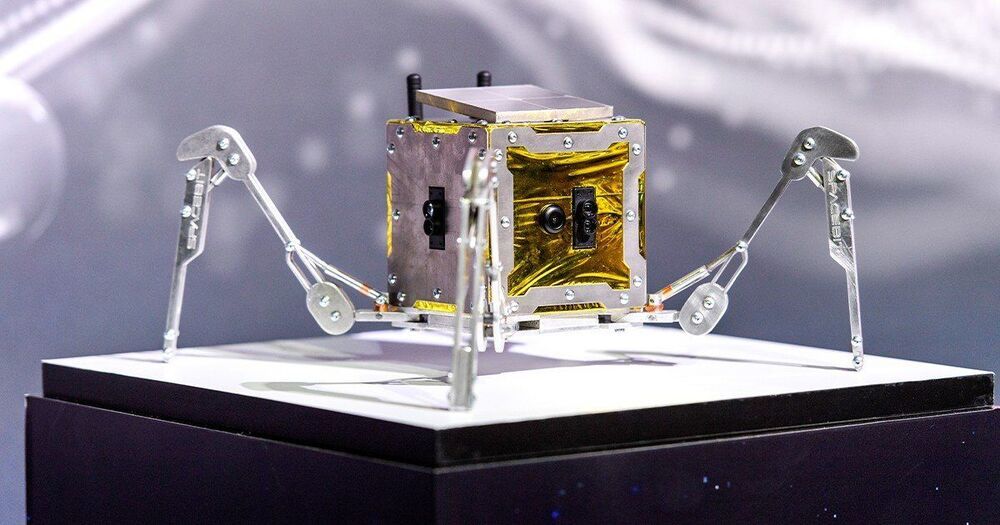Crafting organic containers by shaping the gourd fruit.
Take a sip of coffee from a cup that’s literally GROWN in nature! The gourd fruit can fill any form, making them perfect for crafting containers to hold food and liquids, no plastic needed!


Using ocean/sea waves for power. 😃
This is the Eco Wave Power, an innovative and affordable technology that produces clean, renewable energy from ocean waves. (More info: https://youtu.be/BrDua3j1U3M)
Stem cells from fat. 😃
A new type of stem cell—that is, a cell with regenerative abilities—could be closer on the horizon, a new study led by UNSW Sydney shows.
The stem cells (called induced multipotent stem cells, or iMS) can be made from easily accessible human cells—in this case, fat—and reprogrammed to act as stem cells.
The results of the animal study, which created human stem cells and tested their effectiveness in mice, were published online in Science Advances today—and while the results are encouraging, more research and tests are needed before any potential translation to human therapies.

Not all appears as it would seem in the Whirlpool galaxy. One of the best-studied spiral galaxies and a delight to amateur astronomers, Messier 51, as it’s officially named, is influenced by powerful, invisible forces.
Located 31 million light-years away in the constellation Canes Venatici, the galaxy’s arms are strikingly visible as they reach out along the central spine structure, displaying swirling clouds of gas and dust that are massive star-making factories. But new observations by NASA ’s Stratospheric Observatory for Infrared Astronomy, or SOFIA, presented at this week’s 237th meeting of the American Astronomical Society, shows a more complicated picture.
Radio telescopes previously detected neatly-drawn magnetic fields throughout the length of the galaxy’s massive arms. But under SOFIA’s infrared gaze for the first time those lines give way to a chaotic scene in the outer spiral arms. Using a far-infrared camera and imaging polarimeter instrument called the High-Resolution Airborne Wideband Camera, or HAWC+, researchers found that the magnetic fields in the outskirts of the galaxy no longer follow the spiral structure and are instead distorted.

To understand ourselves and our place in the universe, “we should have humility but also self-respect,” the physicist writes in a new book.
In the spring of 1970, colleges across the country erupted with student protests in response to the Vietnam War and the National Guard’s shooting of student demonstrators at Kent State University. At the University of Chicago, where Frank Wilczek was an undergraduate, regularly scheduled classes were “improvised and semivoluntary” amid the turmoil, as he recalls.
It was during this turbulent time that Wilczek found unexpected comfort, and a new understanding of the world, in mathematics. He had decided to sit in on a class by physics professor Peter Freund, who, with a zeal “bordering on rapture,” led students through mathematical theories of symmetry and ways in which these theories can predict behaviors in the physical world.
The incredible physics behind quantum computing.
Watch the newest video from Big Think: https://bigth.ink/NewVideo.
Learn skills from the world’s top minds at Big Think Edge: https://bigth.ink/Edge.
———————————————————————————
While today’s computers—referred to as classical computers—continue to become more and more powerful, there is a ceiling to their advancement due to the physical limits of the materials used to make them. Quantum computing allows physicists and researchers to exponentially increase computation power, harnessing potential parallel realities to do so.
Quantum computer chips are astoundingly small, about the size of a fingernail. Scientists have to not only build the computer itself but also the ultra-protected environment in which they operate. Total isolation is required to eliminate vibrations and other external influences on synchronized atoms; if the atoms become ‘decoherent’ the quantum computer cannot function.
“You need to create a very quiet, clean, cold environment for these chips to work in,” says quantum computing expert Vern Brownell. The coldest temperature possible in physics is-273.15 degrees C. The rooms required for quantum computing are-273.14 degrees C, which is 150 times colder than outer space. It is complex and mind-boggling work, but the potential for computation that harnesses the power of parallel universes is worth the chase.
Check Chris Bernhardt’s book “Quantum Computing for Everyone (MIT Press)” at http://amzn.to/3nSg5a8
———————————————————————————
TRANSCRIPT:
MICHIO KAKU: Years ago, we physicists predicted the end of Moore’s Law, which says a computer power doubles every 18 months. But we also, on the other hand, proposed a positive program—perhaps molecular computers, quantum computers can take over when silicon power is exhausted. In fact, already we see a slowing down of Moore’s Law. Computer power simply cannot maintain its rapid exponential rise using standard silicon technology. The two basic problems are heat and leakage. That’s the reason why the age of silicon will eventually come to a close. No one knows when, but as I mentioned we already now can see the slowing down of Moore’s Law, and in 10 years it could flatten out completely. So what’s the problem? The problem is that a Pentium chip today has a layer almost down to 20 atoms across, 20 atoms across. When that layer gets down to about five atoms across, it’s all over. You have two effects, heat. The heat generated will be so intense that the chip will melt. You can literally fry an egg on top of the chip, and the chip itself begins to disintegrate. And second of all, leakage. You don’t know where the electron is anymore. The quantum theory takes over. The Heisenberg Uncertainty Principle says you don’t know where that electron is anymore, meaning it could be outside the wire, outside the Pentium chip or inside the Pentium chip. So there is an ultimate limit set by the laws of thermodynamics and set by the laws of quantum mechanics, as to how much computing power you can do with silicon.
VERN BROWNELL: I refer to today’s computers as classical computers. They compute largely in the same way they have for the past 60 or 70 years, since John Von Neumann and others invented the first electronic computers back in the ‘40s. And we’ve had amazing progress over those years. Think of all the developments there’ve been on the hardware side and the software side over those 60 or 70 years and how much energy and development has been put into those areas. And we’ve achieved marvelous things with that classical computing environment, but it has its limits too, and people sometimes ask, “Why would we need any more powerful computers?” These applications, these problems that we’re trying to solve, are incredibly hard problems and aren’t well-suited for the architecture of classical computing. So I see quantum computing as another set of tools, another set of resources for scientists, researchers, computer scientists, programmers, to develop and enhance some of these capabilities to really change the world in a much better way than we’re able to today with classical computers.



The result was a bizarre, Lego-like human tissue that replicates the basic circuits behind how we decide to move. Without external prompting, when churned together like ice cream, the three ingredients physically linked up into a fully functional circuit. The 3D mini-brain, through the information highway formed by the artificial spinal cord, was able to make the lab-grown muscle twitch on demand.
In other words, if you think isolated mini-brains—known formally as brain organoids—floating in a jar is creepy, upgrade your nightmares. The next big thing in probing the brain is assembloids—free-floating brain circuits—that now combine brain tissue with an external output.
The end goal isn’t to freak people out. Rather, it’s to recapitulate our nervous system, from input to output, inside the controlled environment of a Petri dish. An autonomous, living brain-spinal cord-muscle entity is an invaluable model for figuring out how our own brains direct the intricate muscle movements that allow us stay upright, walk, or type on a keyboard.